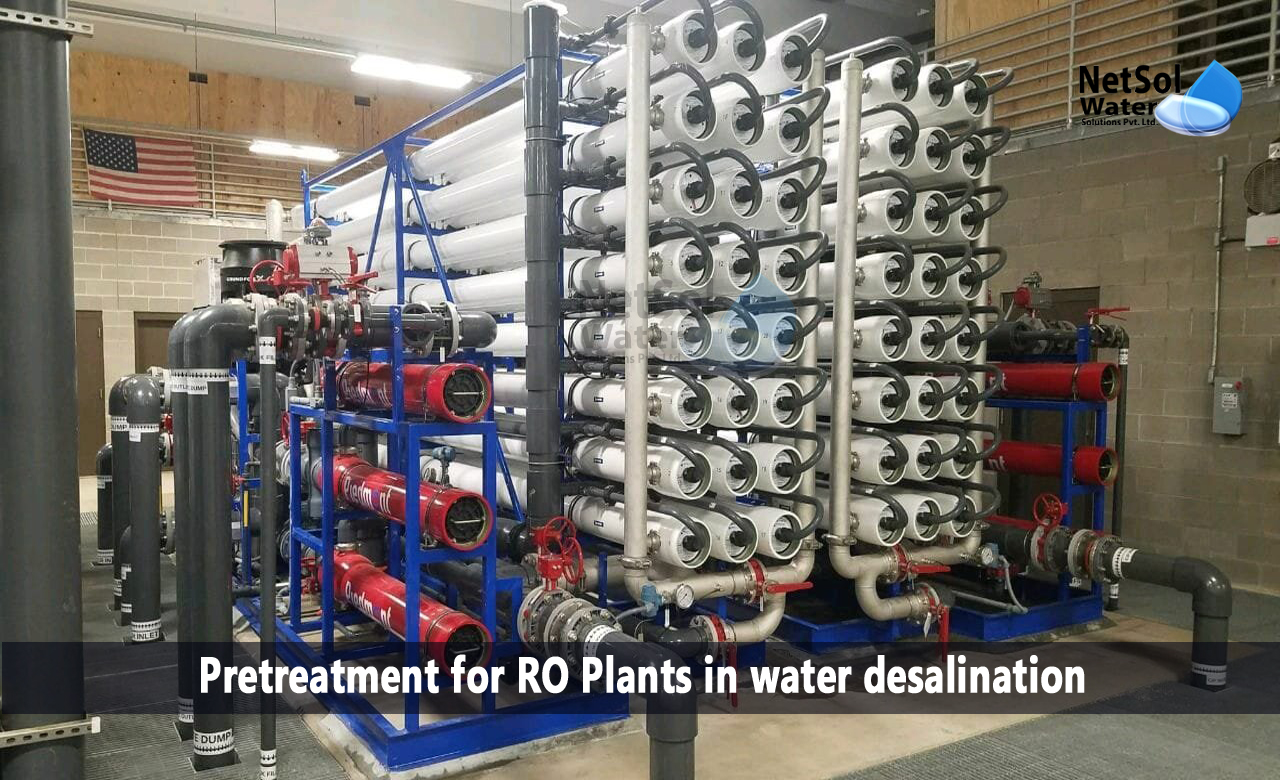What is Pretreatment for RO Plants in water desalination?
The most popular desalination method now in use for seawater desalination is reverse osmosis. In order to desalinate seawater into fresh water for human use, reverse osmosis membranes are primarily used to trap inorganic salts, metal ions, organic compounds, minerals, colloids, and other contaminants.
Along with the reverse osmosis membrane, the pretreatment of RO Plants in water desalination is crucial, because it also affects the lifespan and filtration effectiveness of the reverse osmosis membrane. The primary pretreatment steps in the seawater desalination reverse osmosis process include coagulation, flocculation, dissolved air flotation, multimedia filtration, and microfiltration.
Pretreatment processes for RO Plants in water desalination
1. Dissolved air flotation, coagulation, and flocculation
The coagulation tank and flocculation tank are used to coagulate and flocculate the suspended matter, colloids, and other impurities in the seawater before it is transferred to the storage tank, via high-pressure pumps and pipelines. This causes the sediment to form and sink to the bottom of the tank.
The seawater's suspended particles, organic debris, colloids, algae, and other contaminants are further removed from the supernatant, as it passes through the dissolved air flotation tank. The seawater is then pumped to the multimedia filtration system for the final stage of filtering.
2. Multimedia Filtering Method
The multi-media filter often uses quartz sand, manganese sand, activated carbon, etc. as its filter medium. The primary purpose of the multimedia filter made of quartz and manganese sand is to further remove suspended particles, colloids, microbes, and metal ions from saltwater.
In order to minimize turbidity and colour of water and enhance water quality, the activated carbon filter is primarily used to absorb organic compounds, suspended substances, colloids, chlorine free substances, etc. from saltwater.
3. Microfiltration Method
The primary purpose of the microfiltration process is to catch small water contaminants, and extend the lifespan of the downstream reverse osmosis membrane components. The equipment in the microfiltration system typically uses FRP filter housing, with strong corrosion resistance because saltwater has a high salt content, and will erode stainless steel filter housings.
High flow filtration system made of FRP
The high flow filter cartridge and FRP high flow filter housing make up the FRP High Flow Filter System. These are constructed to meet the various requirements for the space used, the way of assembly and installation, and the water flow.
Conclusion
Netsol Water advises choosing FRP filter housings based on the system's needed water flow, when developing the FRP filtration system. We advise you to select the appropriate specification, according to the actual situation of the project site, and connect them in parallel to meet the project's requirements, if the project site's available space is constrained.
Get high-quality Industrial & Commercial RO Plants from us!
Netsol Water is a top producer of industrial and commercial water treatment plants and wastewater treatment plants. We provide different products to help you improve your water quality.
All kinds of chemical, physical, and biological impurities can be effectively eliminated, by our water treatment systems. For further information or to make a product purchase, contact us at +91-9650608473 or drop a mail at enquiry@netsolwater.com



